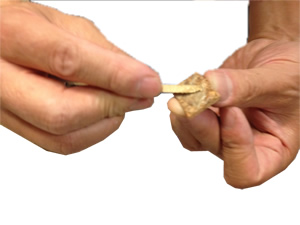How To Patch A Cork Floor
Cork flooring encompasses tiles made from cork oak wood glued or otherwise attached over the top of standard flooring surfaces. While durable, cork flooring can become damaged over time and may need replacing. Cork flooring can be patched; there are simply a few steps you'll have to take to do so. First determine whether you have a glued-down tile system or the floating floor system.
 Floating Floor Planks
Floating Floor Planks
With the floating floor system it is relatively easy to replace a damaged plank(s). Ideally you will have extra planks left over from the initial install or the manufacturer is able to provide you with the same color and design style.
- Study the damaged area. Is it close to a wall or in the middle of the room? This will determine how much uninstall you might be required to do.
- Remove any wall trim or floor molding from around the area of the cork plank(s) that are damaged.
- Carefully uninstall any planks that lead into area of damage.
- Unsnap the plank you are replacing from the adjacent planks.
- Snap the replacement plank into place.
- Reattach all uninstalled plank(s) and molding along the walls.
Glue Down Tiles
With the glue-down tile the process is a little more labor intensive. Pay careful attention to what you are doing.
You will need the following items: paintbrush, a razor blade knife, a scraper tool, cork adhesive or contact cement, a chisel and rubber mallet. Use the mallet, chisel and scraper for removing the tile from the floor, while the adhesive/cement and paintbrush are for applying a layer of adhesive for the new patch tiles.

Ideally, the patch tiles should be the same type of tile you are removing. If you do not have access to such tiles you can use attic stock tiles, or wood filler. It is best to test these in an inconspicuous part of the floor to make sure its tint matches up with the color of your floor.
- Cut away the edges of the old cork tile(s) with the razor blade to give you room to maneuver with the hammer and chisel.
- Break up the damaged tiles with the hammer and chisel and scrape away the remnants with a scraper tool. Do this for all tiles in the damaged area.
- Once the tiles are cleared away, make sure you level the damaged area subfloor evenly.
- Clean the area thoroughly before applying a layer of adhesive or contact cement.
- Press the new tile down onto the adhesive/cement. If using wood filler, fill in the area evenly. Allow the wood filler to dry.) a. Sand over the damaged area with a fine-grit sandpaper and palm sander if needed and apply a stain that matches the color of your cork floor with a rag. (Do this step for wood filler)
- Allow the adhesive/cement to dry the required time before walking on the tiles.

Patching a cork tile means removing the original tile and replacing it with a new one, if you do not have extra tiles from the initial install, the cost can be the price of at least one new cork tile, possibly several if the damage continues to other tiles. Some manufacturers will be happy to provide you tiles for at piece pricing, others may require that you purchase a whole box. Also factor in the price of the adhesive. Most cork tiles will require the correct adhesive to prevent further damage.

How to Order
- Ordering Free Sample
- Ordering by Email
- Order Online
Shipping Info
- Pick-up Locations
Contact Info
Tel: 1-604-207-0661
Tel: 1-604-207-9541
Toll Free:
1-877-998-1198
1-866-998-1198
Fax: 1-866-373-6520
Showroom and Warehouse Address:
Cancork Floor INC
#185-1991 Savage Rd.
Richmond BC, V6V 0A4
Canada
About Cork
- Cork Floor Case Study
- Additional Inforemation
Categories
Helpful Links
- Installation
- Measurements and Maintenance
Information
- Info
- Product Information
